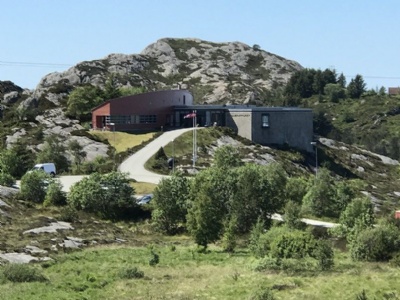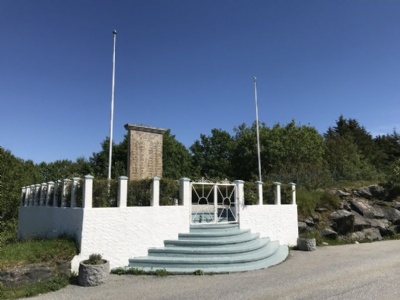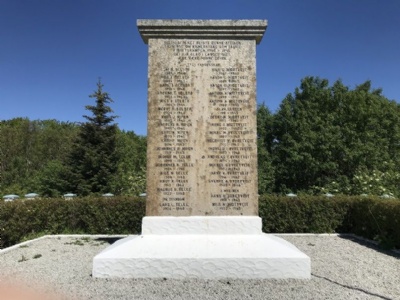Telavåg
About 25 kilometers southwest of Bergen on the Norwegian west coast is a small fishing village called Telavåg. During first half of the Second World War, the village was a hub for agents arriving by boat from Britain to Norway. From Telavåg they were sent on to their destinations/missions in Norway. Transport also went in the opposite direction for people wishing to flee to the UK. Most of the time, the transport went to the Shetland Islands and from there to British mainland. But it was also a risky business for those involved, as one day in April 1942 proved. Two agents had arrived by boat and were kept hidden in a house in Telavåg. The Germans had learned about this through an informant and on April 26 sent about 60 men to Telavåg to arrest the agents. When the agents were confronted, a gun fight occured, where two officers from the Gestapo were killed along with one of the agents. When the gun fight was over, the germans also found a large number of weapons.
The German reich commissar, Josef Terboven, could not let this go unnoticed and therefore decided to set an example. On April 30, all the inhabitants of Telavåg were arrested, all the buildings were burned down, the boats in the harbor were destroyed/submerged and all the cattle were slaughtered. All men between the ages of 16 and 60 who were not murdered were sent to the Sachsenhausen concentration camp in Germany. Of these, 31 were killed. Women and children were sent to Fremne’s school outside Norheimsund about fifty kilometres east of Bergen. Here they were imprisoned for about two years before being released. The Germans also had information signs in nearby villages that it was strictly forbidden to settle in Telavåg and that this would be punished with death. No other village in Norway was hit as hard during the war as Telavåg. On the day of the massacre, the two Gestapo officers were honored with state burial in Bergen.
Current status: Museum (2019).
Address: Årvikadalen 20, 5380 Telavåg.
Get there: Car.
Follow up in books: Mackenzie, W.J.M.: The Secret History of SOE: The Special Operations Executive 1940 – 1945 (2002).



What happened to Telavåg was exactly the same what happened to Lidice in Czech Republic, Oradour in France, Khatyn in Belarus or Kragujevac in Serbia, but is not as well known. The basis of the massacres at these sites was exactly the same as in Telavåg, but perhaps it is its seclusion on the Norwegian west coast that has made it difficault to find its way to people’s consciousness. After the war, Telavåg was rebuilt. At the museum, which is also about the transport of agents and others during the Second World War, there is an interesting exhibition and, above all, an interesting film about the massacre.